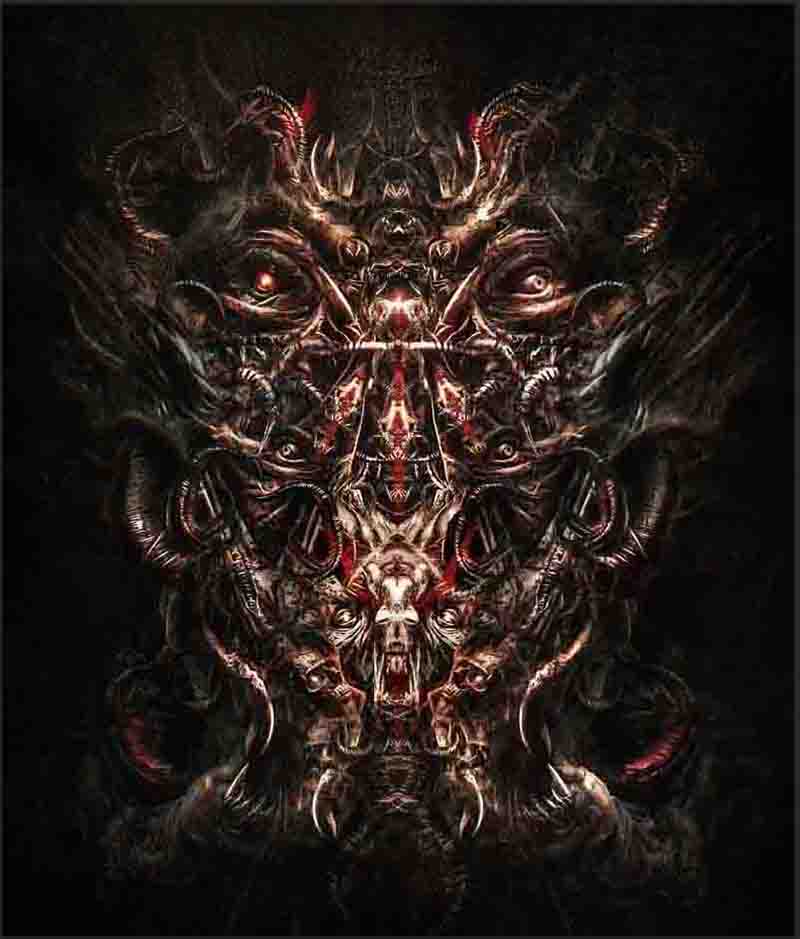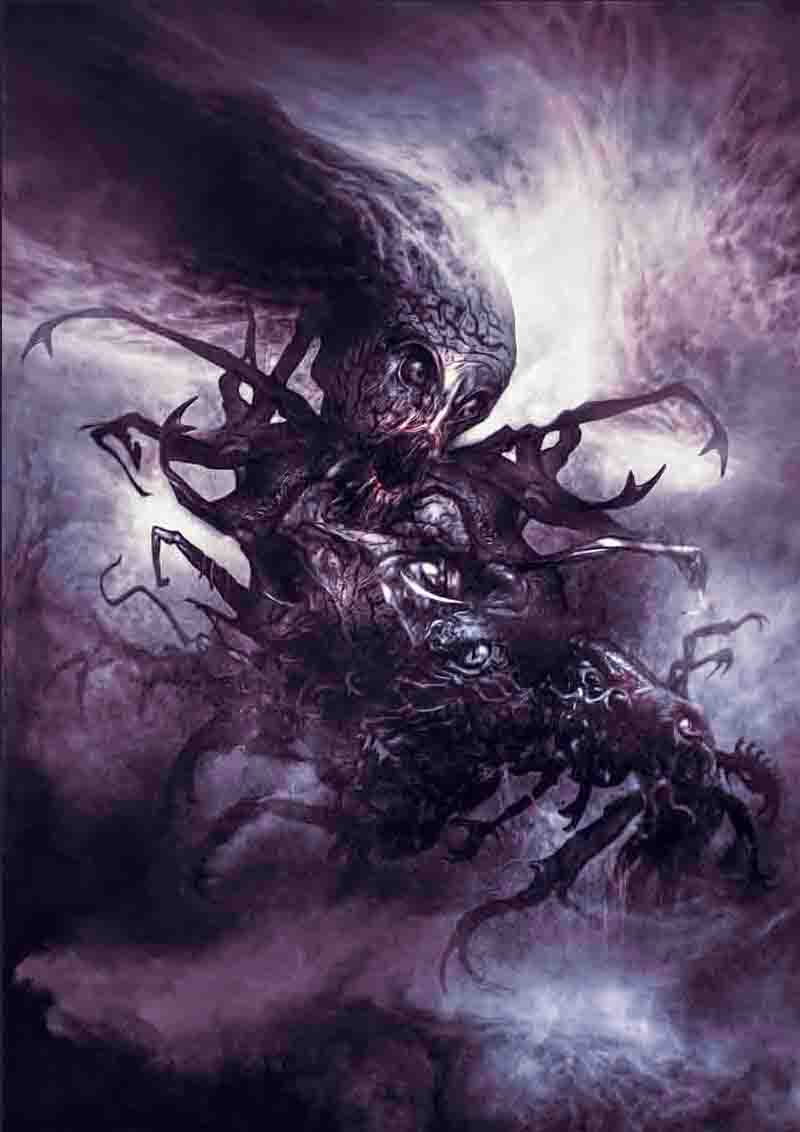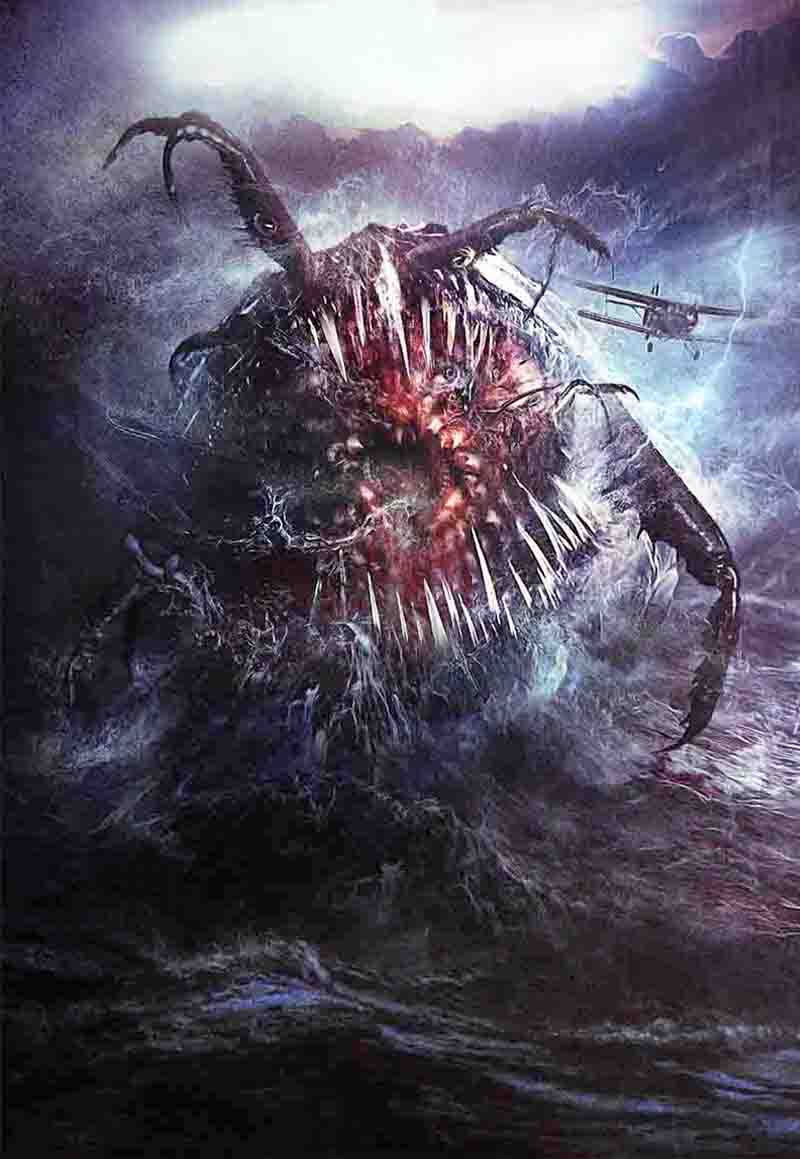Unfolding the Bizarre World of Dark Art
Dark Art digs into the shadows of the human psyche and mixes the beautiful with the macabre. From haunting paintings to eerie sculptures, it evokes feelings of unease and fascination. Explore the depths of darkness in this enigmatic genre where artists express complex narratives through haunting imagery, inviting the viewer into a realm of mystery and introspection.

Dark art features imagery such as skulls, ghosts, monsters, and dystopian landscapes, creating a sense of unease and fascination in the viewer.
Dark Art is a genre that explores themes of the macabre, horror, the supernatural, and the surreal.
It combines disturbing and beautiful elements to evoke strong emotional responses.
Artists in this genre draw inspiration from gothic literature, vampire and horror films, mythology, and historical art movements.
This genre includes influences from artists like Francisco Goya, Hieronymus Bosch, and contemporary figures in horror and surrealism.
Also referred to as grotesque art, these works are characterised by a mixture of intricate details and imaginative concepts, resulting in creations that are both technically accomplished and creatively arresting.
Dark Fantasy Art reflects on themes of existentialism, good and evil, life and death, and the human condition, creating compelling and thought-provoking works.
These illustrations of darkness echo the zeitgeist, a spirit of the age, marked by uncertainty and a sense of impending doom.
Dark Art has carved out its general significance, thematic depth and enduring relevance in contemporary art and counterculture.
Expression of darkness through art has become an exceptionally trendy commodity in the world of collectibles.
Dark Art is a thought-provoking and emotionally charged genre that challenges and captivates its audience through its exploration of the darker side of life and art.
12 Important Facts to know about Dark Art
-
Historical Roots: Dark Art has historical roots in various art movements and periods, including Gothic art, Baroque, and Romanticism. Artists like Francisco Goya and Hieronymus Bosch were pioneers in incorporating dark themes into their work.
-
Themes of Mortality: Dark Art often explores themes of mortality, the afterlife, and the human condition, confronting viewers with the inevitability of death and the unknown aspects of existence.
-
Psychological Depth: This genre delves into the psychological aspects of fear, anxiety, and the subconscious. It aims to evoke strong emotional and psychological responses from its audience.
-
Supernatural and Mythological Elements: Dark Art frequently incorporates supernatural beings, mythological creatures, and otherworldly scenarios, drawing from a rich tapestry of folklore and mythology.
-
Symbolism: Symbolism is a key component in Dark Art, with artists using various symbols to convey deeper meanings and provoke thought. Common symbols include skulls, ravens, and other macabre imagery.
-
Technical Mastery: Dark Art requires a high level of technical skill across various mediums such as painting, sculpture, digital art, and mixed media. Mastery of techniques is essential for effectively conveying complex and dark themes.
-
Influence of Literature and Film: Gothic literature, horror films, and other cultural narratives heavily influence Dark Art. Works by Edgar Allan Poe, H.P. Lovecraft, and films like those by Alfred Hitchcock and Guillermo del Toro provide rich sources of inspiration.
-
Exploration of Existential Questions: Artists in this genre often explore existential themes, questioning the nature of existence, the meaning of life, and the presence of evil in the world.
-
Community and Collaboration: Dark Art fosters a strong sense of community among artists and enthusiasts. Exhibitions, conventions, and online forums provide platforms for sharing and discussing work and ideas.
-
Contemporary Relevance: Dark Art remains relevant today, continually evolving with contemporary issues and modern aesthetics. It adapts to current societal fears and anxieties, making it a dynamic and continually engaging genre.
-
Emotional Impact: The primary aim of Dark Art is to evoke a powerful emotional response. Whether it is fear, sadness, or awe, the emotional impact is central to the experience of Dark Art.
-
Integration of Beauty and Horror: One of the hallmarks of Dark Art is its ability to blend beauty with horror. This juxtaposition creates a unique and compelling aesthetic that challenges and fascinates viewers.
By embracing themes of darkness and confronting taboo subjects, artists can create powerful and thought-provoking artworks that resonate with viewers on a deep and visceral level.
Dark Art: Timeline
Dark art has a long and intriguing history, stretching back to ancient civilizations where themes of death, the afterlife, and the supernatural were depicted in art and mythology.
Contemporary dark art continues to evolve, influenced by a diverse range of sources including horror cinema, gothic literature, and underground subcultures.
| Year | Milestone |
|---|---|
| Ancient Civilization | Dark themes appear in ancient art, including depictions of death, the afterlife, and supernatural beings in Egyptian funerary art, Mesopotamian mythology, and Greek and Roman mythology. |
| Middle Ages | Dark art flourishes during the Middle Ages, with Gothic art and architecture featuring themes of mortality, sin, and divine judgment. Churches and cathedrals are adorned with grotesque imagery depicting hell and damnation. |
| Renaissance | Artists like Hieronymus Bosch explore dark and macabre themes in their work, with paintings such as "The Garden of Earthly Delights" depicting surreal and disturbing scenes of sin, punishment, and human folly. |
| Baroque Era | Francisco Goya's "Black Paintings" reflect the artist's descent into madness and explore themes of despair, madness, and existential dread. The Baroque period sees a resurgence of interest in dark and introspective artistic expression. |
| Romanticism | Romantic artists like Henry Fuseli and William Blake explore themes of the supernatural, the subconscious, and the macabre in their work, reflecting the Romantic movement's fascination with the darker aspects of human experience. |
| Victorian Era | The Victorian era sees a revival of interest in Gothic literature and dark art, with artists like Gustave Doré creating haunting illustrations for works by authors such as Edgar Allan Poe and Dante Alighieri. |
| 20th Century | The rise of symbolism and surrealism in the late 19th and early 20th centuries provides a fertile ground for dark artistic expression, with artists like Edvard Munch and Salvador Dalí exploring themes of anxiety, alienation, and existential angst. |
| Contemporary Era | Dark art continues to evolve in the contemporary era, influenced by a diverse range of sources including horror cinema, gothic literature, and underground subcultures. Artists explore themes of horror, fantasy, and the supernatural through various mediums and techniques. |
Artworks that delve into the macabre explore themes of death, decay, the grotesque, and the supernatural, offering viewers a glimpse into the darker aspects of human existence and the mysteries of the unknown.
Dare to Enter the Darkness: Inspiring Dark Art for Visionaries

Dark art is a deeply personal form of expression that allows artists to explore their innermost fears, desires, and anxieties.
Origins and Influences
Dark Art has its roots deeply embedded in human history, with traces of its influence found in ancient civilizations and cultures around the world.
However, it wasn't until the Middle Ages and the rise of Gothic art and architecture that Dark Art began to take shape as a distinct genre.
Gothic literature, with its eerie tales of terror and suspense, played a significant role in shaping the aesthetic and thematic elements of Dark Art
Additionally, the works of artists like Francisco Goya and Hieronymus Bosch in the Renaissance period laid the groundwork for the exploration of darkness and the grotesque in art.
Techniques and Mediums
One of the defining characteristics of Dark Art is its versatility in terms of artistic techniques and mediums.
From the haunting brushstrokes of oil paintings to the intricate details of sculpture, Dark Artists employ a diverse range of tools and methods to bring their dark visions to life.
Digital art has emerged as a prominent medium in recent years, allowing artists to explore new dimensions of darkness through technology and multimedia platforms.
Themes and Symbolism

Contemporary dark art continues to evolve, influenced by a diverse range of sources including horror cinema, gothic literature, and underground subcultures, exploring themes of horror, fantasy, and the supernatural through various mediums and techniques.
Dark Art is rich in symbolism and thematic depth, often exploring universal concepts such as mortality, fear, and the human condition.
Common themes include death, decay, the supernatural, and the grotesque, each carrying its own symbolic significance.
Through the use of symbolism, Dark Artists aim to provoke thought and evoke emotional responses in viewers, inviting them to confront their deepest fears and anxieties.
Masters of Dark Art
Throughout history, there have been masterful artists who have left an indelible mark on the world of Dark Art.
Francisco Goya's "Black Paintings" and Hieronymus Bosch's surreal and nightmarish depictions of hell have inspired generations of artists to explore the darker aspects of the human experience.
In the contemporary art world, figures such as H.R. Giger, Clive Barker, Freierstein, and Zdzisław Beksiński consistently advance the limitations of dark art and carve out the genre in their respective ways.
Contemporary Trends and Movements
In the modern era, Dark Art has undergone a renaissance of sorts, with artists exploring new and innovative ways to express darkness and despair.
Psychological horror, social commentary, and the intersection of technology and darkness are just a few of the emerging trends in contemporary Dark Art.
Artists of the genre challenge norms and conventions, redefining what it means to create art that is both disturbing and beautiful.
Dark Art in Popular Culture
Dark Art has permeated popular culture in various forms, from films and literature to music and fashion.
Its influence can be seen in iconic horror films like "The Exorcist" and "Psycho," as well as in the dark and haunting melodies of gothic music.
Fashion designers, extending all the way to haute couture, are inspired by the aesthetics of dark art, incorporating elements of darkness and decay into their designs to create edgy and avant-garde collections.
Dark Art Exhibitions and Events
Around the world, there are numerous exhibitions and events dedicated to showcasing the work of Dark Artists.
These exhibitions provide a platform for emerging and established artists to share their dark-themed artwork with a wider audience.
From galleries and museums to underground art shows and festivals, Dark Art exhibitions offer viewers a unique opportunity to engage with the genre and explore its depths.
Uncanny Splendour: Exploring Dark Art
Artwork inspired by horror literature, films, and pop culture features a diverse array of monsters, vampires, zombies, and other terrifying creatures.
Here are some examples of such artwork, showcasing the creativity and imagination of artists who draw inspiration from the darker realms of human imagination.
-
Dracula by Francisco de Goya (1797-1798): Inspired by Bram Stoker's classic novel "Dracula," this eerie painting by Goya depicts the legendary vampire looming over a sleeping woman, his piercing gaze and bared fangs evoking a sense of dread and unease.
-
The Creature by H.R. Giger (1979): H.R. Giger's iconic design for the alien creature in the film "Alien" is a haunting blend of biomechanical and organic elements, with its elongated head, razor-sharp teeth, and biomechanical exoskeleton striking fear into the hearts of viewers.
-
The Nightmare (1781) by Henry Fuseli: The painting shows a sleeping woman who is paralysed by a monstrous creature sitting on her chest. The dream-like scene evokes feelings of fear and claustrophobia and speaks to the general fear of nightmares.
-
Frankenstein by Bernie Wrightson (1983): Bernie Wrightson's illustrated edition of Mary Shelley's "Frankenstein" brings the iconic monster to life with stunning detail and pathos, capturing the tragic essence of the creature as he grapples with his own identity and existence.
-
The Walking Dead Comic Covers by Tony Moore (2003-2012): Tony Moore's striking comic book covers for "The Walking Dead" series capture the horror and tension of a world overrun by zombies, with visceral imagery and dynamic compositions that draw readers into the grim and dangerous world of the undead.
-
The Shining by Saul Bass (1980): Saul Bass's iconic poster for Stanley Kubrick's film "The Shining" features a simple yet haunting design, with a blood-red elevator gushing torrents of blood against a stark black background, symbolizing the horrors lurking within the haunted Overlook Hotel.
Francis Bacon Head VI (1949): The portrait of a deformed human head is an excellent example of Bacon's use of biomorphic forms and his endeavour to capture the essence of a person rather than their physical likeness.
Throughout history, dark art has evolved and adapted to reflect changing cultural attitudes and artistic movements.
Awakening Emotions with Dark Art: Thrilling Souls and Gripping Minds!
The interpretation of darkness in art varies greatly across different cultures and traditions, reflecting unique cultural perspectives, spiritual beliefs, and historical influences.
Whether in the Gothic traditions of the West or the Eastern depictions of death and the afterlife, darkness serves as a powerful symbol that invites contemplation of the mysteries of existence and the complexities of the human condition.
As long as there are artists willing to explore the depths of human darkness, Dark Art will continue to captivate and provoke audiences for generations to come.
All artworks on this page © Freierstein
Freierstein reveals an unsettling aesthetic and a captivating exploration of the macabre.
Dark Art: FAQ
Are you curious about music, art, technology, fashion, lifestyle, and beer?
If so, then you need to subscribe to the free Likewolf newsletter.
100% privacy. When you sign up, we'll keep you posted.
A Creepy Twin
Mysteries of Identity and the Strange
